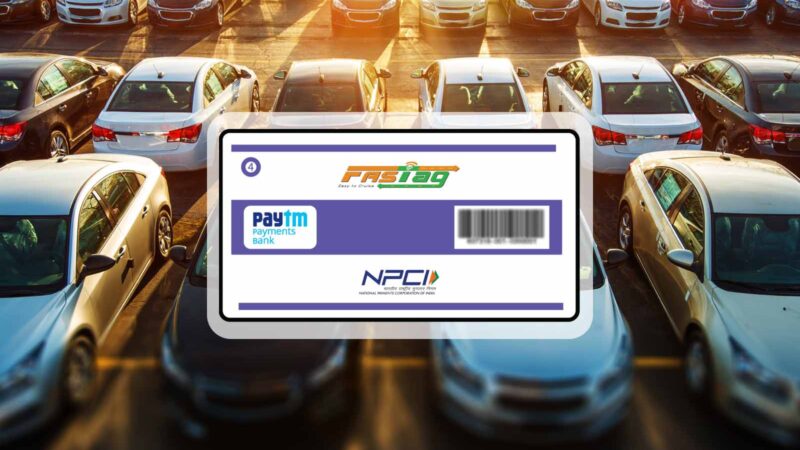Unlocking the Potential of IoT: The Ultimate Guide to Finding the Best IoT SIM Cards

Welcome to the era of the Internet of Things (IoT), where everyday objects are becoming smarter and more connected than ever before. From smart homes to wearables, from industrial machinery to transportation systems, IoT is revolutionising how we live and work. But behind this seamless connectivity lies a crucial component – the IoT SIM card. In this ultimate guide, we will unravel the mysteries surrounding IoT SIMs and help you navigate through the vast landscape of options available in order to find the best one for your specific needs. Get ready to unlock the true potential of IoT with our comprehensive insights and recommendations – because when it comes to these tiny yet powerful cards, choosing wisely could make all the difference in unleashing innovation and achieving unprecedented levels of efficiency.
What is IoT and Why Do You Need SIM Cards?
IoT, or the Internet of Things, refers to the network of physical objects that are connected to the internet and can communicate with each other. These objects could be anything from smart home devices like thermostats and cameras, to industrial machinery and vehicles.
The concept of IoT has been around for decades, but it has gained significant traction in recent years due to advancements in technology such as wireless connectivity, cloud computing, and artificial intelligence. The ability for devices to collect data, analyse it in real-time, and make decisions without human intervention is what makes IoT so revolutionary.
Why Do You Need SIM Cards for IoT?
One crucial component that enables IoT devices to connect to the internet is a SIM card. A SIM card (Subscriber Identity Module) is a small chip used in mobile devices like smartphones and tablets. It contains unique information that identifies your device on a cellular network.
Traditionally, SIM cards have been associated with mobile phones only. Still, as more and more non-traditional devices become connected through cellular networks, there is an increasing need for specialised IoT SIM cards.
Here are some reasons why you need a dedicated IoT SIM card for your connected device:
1) Connectivity: As mentioned earlier, an essential function of an IoT device is its ability to connect to the internet. An IoT-specific SIM card allows your device to access cellular networks globally and ensures reliable connectivity even in remote areas.
2) Cost-effective: Most traditional mobile plans come with high data usage limitations which may not be suitable for IoT devices that may need to transmit small amounts of data frequently. IoT-specific SIM cards come with tailored pricing plans that are better suited for low data usage and can save on costs in the long run.
3) Security: IoT SIM cards are designed with advanced security features to protect your device from cyber attacks. These features include encrypted communication channels, remote device management, and secure cloud connectivity.
4) Scalability: With traditional mobile plans, adding new devices to your network can be challenging and expensive. But with an IoT SIM card, you can easily add or remove devices as needed without any additional costs.
5) Remote Management: With an IoT-specific SIM card, you can remotely manage your connected devices from a central dashboard. This makes it easy to monitor your device’s performance, troubleshoot issues, and make updates without physically accessing the device.
Overall, using an IoT SIM card allows you to have greater control over your connected devices while also ensuring reliable connectivity and cost savings. As more and more objects become connected through the internet, the demand for specialised IoT SIM cards will continue to grow.
Understanding the Different Types of IoT SIM Cards
The Internet of Things (IoT) has revolutionised the way we live and work, connecting everyday objects to the internet and enabling them to communicate with each other. This connectivity is made possible through IoT SIM cards, which are specifically designed for use in devices that require low power and low data consumption. In this section, we will dive into the different types of IoT SIM cards available on the market today.
1. Standard SIM Cards
Standard SIM cards are the most commonly used type of SIM card and are typically found in smartphones and tablets. These cards have a larger form factor compared to other types of IoT SIM cards, making them unsuitable for small devices or devices that need to be embedded inside equipment. They also require a higher power supply, which can drain battery life quickly in IoT devices.
2. Micro SIM Cards
Micro SIM cards were introduced as a smaller alternative to standard SIM cards. They have the same functionality as standard-sized SIMs but are smaller in size, making them ideal for compact devices such as wearables or tracking sensors. However, they still require a higher power supply than specialised IoT SIMs.
3. Nano SIM Cards
Nano-SIMs are even smaller than micro-SIMs and were first introduced with the iPhone 5 in 2012. They have become increasingly popular due to their tiny form factor and compatibility with most modern smartphones and tablets. However, like standard and micro-SIMs, they consume more power than dedicated IoT SIMs.
4. Embedded SIM (eSIM)
Embedded SIMs, also known as eSIMs, are built into the device during manufacturing and cannot be removed or replaced. They are significantly smaller than standard, micro, and nano-SIMs, making them ideal for use in tiny IoT devices. They also have a lower power consumption because they do not require a physical connection to the device.
5. Industrial IoT SIM
Industrial IoT SIMs are designed specifically for use in rugged environments with extreme temperatures and harsh conditions. These SIMs are more durable and have a longer lifespan compared to standard SIM cards. They also have enhanced security features to protect against cyber threats.
6. Low Power Wide Area Network (LPWAN) SIM
Low Power Wide Area Network (LPWAN) SIM cards are specifically designed for use in long-range, low-data applications such as smart metres and agricultural sensors. These cards offer low power consumption and extended coverage in remote areas where traditional cellular networks may not reach.
7. Machine-to-Machine (M2M) SIM
Machine-to-Machine (M2M) SIMs are designed for use in devices that continuously transmit small amounts of data over a cellular network, such as vending machines or vehicle tracking systems. These SIM cards typically have lower data usage limits and are more cost-effective for M2M applications.
There are various types of IoT SIM cards available on the market, each with its own unique features and capabilities. When choosing an IoT SIM card for your device, it is important to consider factors such as power consumption, form factor, coverage, and security to ensure optimal performance and connectivity.
Factors to Consider When Choosing an IoT SIM Card Provider
Choosing the right IoT SIM card provider is a crucial step in unlocking the full potential of your IoT devices. With so many providers on the market, it can be overwhelming to determine which one will best suit your needs. Here are some key factors to consider when choosing an IoT SIM card provider:
1. Network Coverage:
The first and most important factor to consider is network coverage. You want to ensure that your devices will have reliable connectivity no matter where they are located. This is particularly important for devices that may be deployed in remote or rural areas. It’s essential to research the coverage map of different providers and choose one that offers comprehensive coverage in your desired locations.
2. Data Plans:
The next factor to consider is the data plans offered by the provider. IoT devices typically require lower data usage compared to smartphones, so it’s crucial to find a provider that offers cost-effective plans tailored specifically for IoT applications. Look for providers that offer customizable plans with options for both high and low data usage.
3. Pricing:
When it comes to pricing, it’s essential to find a balance between cost-effectiveness and quality of service. Some providers may offer cheap rates but compromise on network coverage or reliability. On the other hand, some may charge high prices without providing value-added services such as 24/7 customer support or real-time monitoring tools. It’s essential to compare pricing from different providers and choose one that provides competitive rates while also offering quality service.
4. Scalability:
Another critical aspect to consider is the scalability of the provider. As your IoT project grows, you may need to add more devices or expand into new locations. Make sure that the provider can accommodate your growth and offer flexible solutions that can be easily scaled up or down as needed.
5. Security:
IoT devices are vulnerable to cyber-attacks, so it’s crucial to choose a provider that prioritises security. Look for providers that offer features such as secure authentication, data encryption, and remote device management tools.
6. Customer Support:
In case of any issues or technical difficulties with your IoT devices, you want to have reliable customer support from your provider. Look for providers that offer 24/7 customer support and have a dedicated team to handle IoT-related queries.
7. Value-Added Services:
Lastly, consider if the provider offers any value-added services such as real-time monitoring tools, data analytics, or integration with third-party platforms. These services can help you optimise and manage your IoT devices more effectively.
Choosing the right IoT SIM card provider is essential for ensuring reliable connectivity and maximising the performance of your IoT devices. Consider factors such as network coverage, data plans, pricing, scalability, security, customer support, and value-added services when making your decision. Conduct thorough research and compare different providers before making a final decision.
Conclusion
It is clear that the Internet of Things (IoT) has immense potential to transform industries and everyday life. However, in order to fully utilise this technology, having a reliable and efficient IoT SIM card is crucial. By following these tips and considering important factors such as coverage, pricing, and security features, finding the best IoT SIM card for your specific needs can be made easier. With the right SIM card in hand, you can unlock the full potential of IoT and stay connected at all times. So don’t wait any longer, start exploring your options now!





